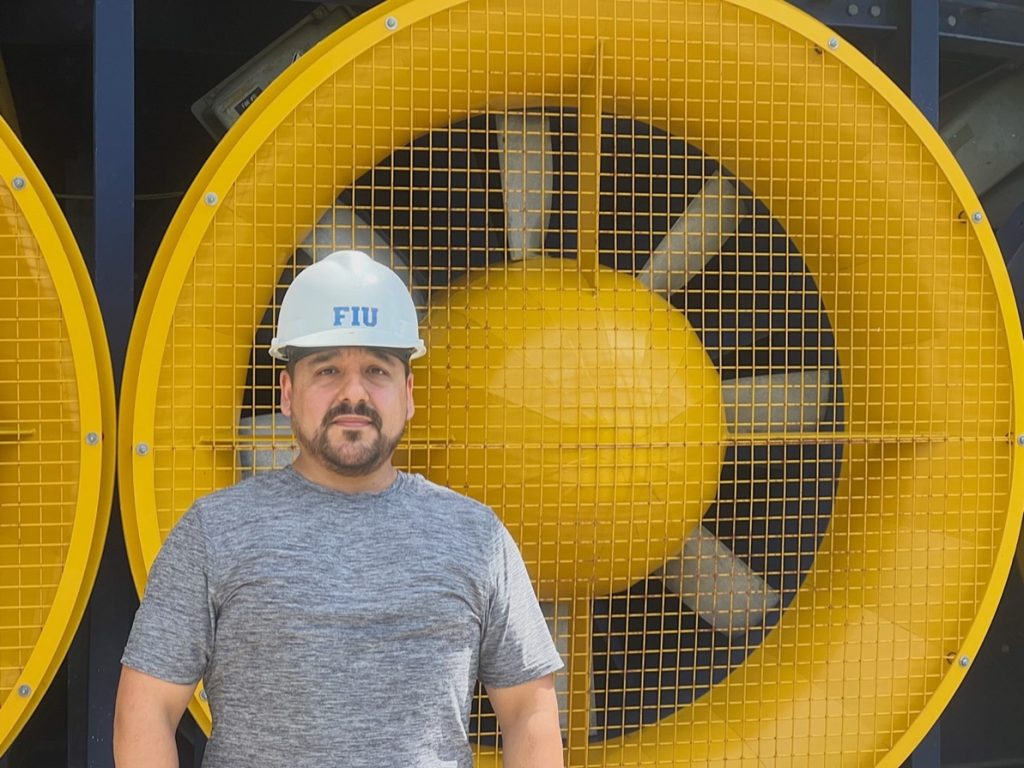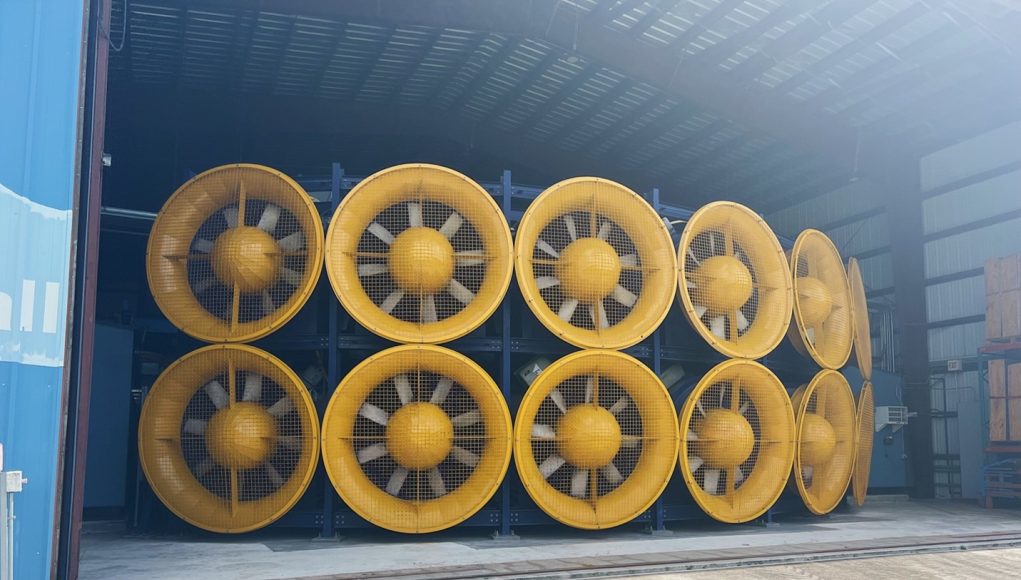A recent grant from the National Science Foundation (NSF) will help researchers at Florida International University better understand how to prepare for a new breed of storms.
Earlier this year, NSF awarded FIU Extremes Events Institute $12.8 million to support the design of a full-scale hurricane simulation and testing center. It will be the largest of its kind in the United States.
Currently, FIU’s Engineering Campus, located on Flagler Street, is home to the Wall of Wind (WOW), a 12-fan, 8,400 horsepower wall that can produce winds up to 157 mph. That is equivalent to a Category 5 hurricane.
The WOW is used by researchers to better understand storms’ impact on buildings, water and energy systems, roads, bridges and other key infrastructure. Prototypes are built and then placed in the path of the wall of wind to test resiliency.
But with storms becoming stronger and more frequent due to climate change, the need for a new facility is well-timed. June marks the beginning of the Atlantic Hurricane Season. The National Oceanic and Atmospheric Administration (NOAA) is projecting this to be an above average season, with a likely range of 14 to 21 named storms, with three to six of those likely to become major hurricanes (Category 3 or above).
If NOAA is correct in their predictions, this will be the seventh consecutive above average hurricane season.

The new grant funded facility will be formally titled “Mid-Scale RI-1 (M1:DP): National Full Scale Testing Infrastructure for Community Hardening in Extreme Wind, Surge, and Wave Events (NICHE).” And Manuel Matas, a research specialist at WOW since 2016, says it will be a game changer.
“The new facility will have a test section of 40 feet wide by 20 high,” he said. “And we are aiming to reach 200 miles an hour.”
Hurricane Andrew, the last major hurricane to hit South Florida, produced winds of 174 mph when it struck near Homestead in 1992. Seventeen mph more than what the current wall of wind can produce.
But strong wind is not the only factor to understanding infrastructure’s resiliency to hurricanes.
A vital feature of this new facility will be the construction of a water basin that will be able to mimic storm surge and wave action.
“It’s a mix of different failures that make a hurricane so deadly,” Matas said. “We could be prepared for wind, but we might not be prepared for storm surge.”
The storm surge created by Hurricane Andrew was recorded at 17 feet above sea level at Biscayne Bay.
“There are certainly events that will surprise us,” Matas said.
And NICHE will give South Florida and beyond a better chance to build better infrastructure to prepare us for those surprise events.
FIU’s academic partners for the NICHE project include the University of Florida, Oregon State University, Stanford University, the University of Notre Dame, the Georgia Institute of Technology, the University of Illinois at Urbana-Champaign, Colorado State University and Wayne State University. The principal industry partner is Aerolab.
































